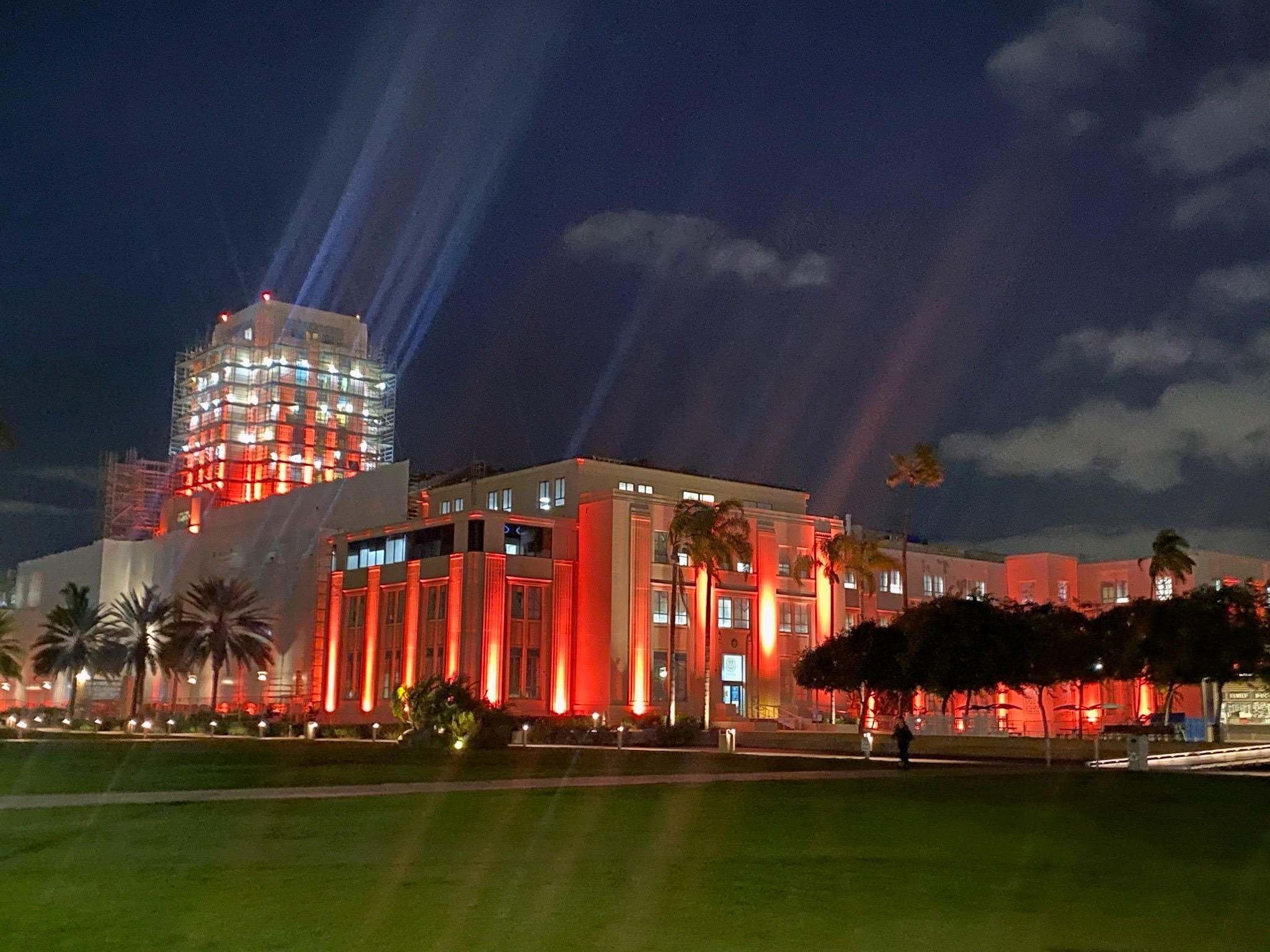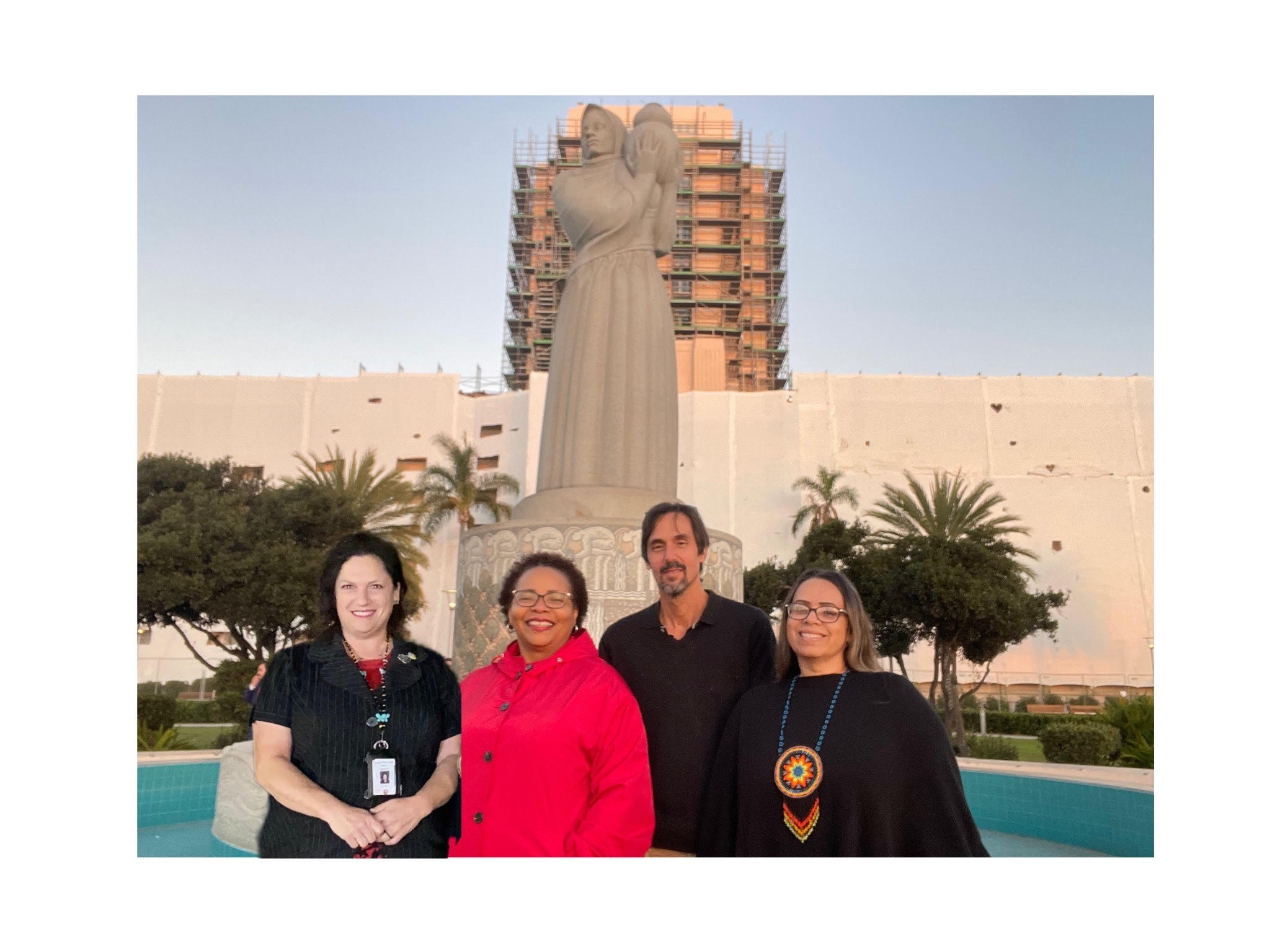November is Native American Heritage Month. During this same month, the United States celebrates one of its greatest myths, Thanksgiving. Every child in the States is taught that in 1621, Pilgrims and the Wampanoag (usually just called “Indians”) sat down and had a “peaceful” meal. This is taught out of context and without acknowledging the bloody slaughter that the Wampanoag and other Indigenous nations in the area faced from the newcomers quickly after their first meeting. Representations of Indigenous peoples that simplify complex cultures into a few stereotypical images do us a disservice and continue to perpetuate settler-colonialist myths. Some Indigenous people recognize Thanksgiving as a Day of Mourning or Unthanksgiving. Tempest members Avery Wear and Brian Ward sat down with Maria Whitehorse, who is the founder of the Indigenous Sovereign Nations Employee Resources Group for San Diego County employees, to discuss the role her organization plays in supporting the Indigenous community and combating settler colonialism in San Diego and beyond.
Avery Wear: Could you talk a little bit about who you are? You founded the Indigenous Sovereign Nations (ISN) Employee Resource Group for San Diego County employees this year. What led you to start this?
Maria Whitehorse: I have been a San Diego County employee for 15 years. I’ve also been a union advocate for about 13 years and I’ve lived in San Diego all my life.
Having an Indigenous family and seeing the disconnection from the culture relit a fire that I’ve had for years on educating the community and bringing visibility to the culture.
I know there is an unfair history that is being taught about my ancestors that has no validity and must be corrected. By forming this group, I wanted to address this and have the community unlearn and relearn the culture the right way through the testimonies of my ancestors and just everybody who is tribal, connected tribally to a tribal affiliation, or who has Indigenous family and ancestry.
Brian Ward: The ISN joined the Orange Shirt Day, which commemorates the sufferings of Indigenous children in Indian Boarding Schools. You all asked the county to join the commemoration by lighting the downtown county building orange that night. At first they refused, but later they felt they had to do it. How did that come about?
MW: I’ll give a quick history about Orange Shirt Day, which was where the request came from. The Orange T-shirt is a memorial to the children who were stolen from their tribes and put into boarding schools to assimilate, which took away their tradition and their cultures.
They obviously endured trauma. Some of the children died of starvation and illnesses. I felt a need to give honor to these children. A lot of people think that this started in Canada (which it may have), but we also had boarding schools here in the United States, particularly here in California. The few boarding schools here in California that have been recognized led us to request a building to be lit in orange to honor these children on September 30.
We requested that the County of San Diego light the building. Unfortunately, there was a disconnect in communication regarding getting the building lit which prompted us to request a meeting with the Board of Supervisors [Chair] Nathan Fletcher. In that meeting, there was myself representing ISN and a few tribal members. We spoke about what transpired in terms of getting denied to light the building for the children.
He agreed that this needed to be honored and needed to be done. He agreed to go ahead and light the building on November 2 in honor of the children. However, we did mention that this was a little late. Had this been on September 30, it would have had more meaning.
This memorial was lit in memory of not only the children that were killed but also the survivors, because we have a lot of children that did survive these boarding schools and they’re very impacted by the trauma. Lighting the building in orange is in memory (and honor) of them because they did pay an ultimate sacrifice to their relations.

AW: San Diego County has the largest number of reservations of any county in the U.S. There’s a long history of Indigenous struggle in this part of the world. How do you see ISN as a new organization of county employees fitting in with this ongoing historical struggle?
MW: I believe that ISN is ready, equipped to educate, and able to give the space to do so. Visibility is important: putting on events and showing our culture. I know our culture has its struggles, but we are survivors. We were once marked for extinction. But we are still here.
It is also important to discuss how poverty and economic barriers lead some Indigenous people to leave their communities because they want a better life for their families. But leaving reservations makes them lose their culture and traditions.
The purpose of ISN was to give that safe space to reconnect those that chose to leave their culture in search of a better life. And we are not only one tribe; we are all-inclusive from the North to the South. We’re a safe space to learn from each other’s traditions and cultures. It’s just an open space to reconnect.
BW: Regarding Indigenous peoples leaving reservations and going into cities looking for different opportunities, an overwhelming majority (about 72 percent of Indigenous people) live in urban environments. Were there any organizations, or things that you saw, that inspired you to create ISN and connect to issues specifically for urban Native folks?
MW: We live in the county of San Diego, which is Kumeyaay Nation.
We also have an array of other tribal people that come from around South America. From what I’ve seen, the people from Oaxaca suffer tremendously, as well. First, because the government says they are illegal when this is their land. There’s a saying: “we didn’t cross the border, the border crossed us.” They don’t live on a reservation. They’re urban Indigenous people. They live in town with us. And not only Oaxacans. There are other people who I have met who belong to tribes that have been detribalized. They’re not recognized because the government has unrecognized their tribes going back to the sixties and fifties. So they have no reservation or recognition, but they live in urban areas. The goal is to reconnect them and help them come back to their roots.
It’s much too easy to say, “I’m going to leave my reservation because I want a better life.” But they have sacrificed their traditions and culture to do that; to live here in an urban area as a Native. I want to bring out that Native in them because there are many who don’t recognize that they’re Native because they weren’t raised like that, because their parents were ashamed or because of the stigma that comes with it.
I want to take ISN to help urban Natives, too. I know we have lots of them in San Diego and I’m hoping that they will reach out so that we can come together in our relations and help others.
I met a woman who was from the Pine Ridge Reservation. If I’m not mistaken, they’re one of the poorest reservations out there. They’re the ones that I believe are being punished for the killings and the history done to them. When we discussed Pine Ridge, she said, “There are many that come as a savior, but the people don’t want that.” They don’t want that savior. It’s gotta come from within them, inside the reservation. But maybe I can extend the education here on what that reservation is going through; maybe send some kind of message or some kind of help. Not being a savior but allowing them to be self-sufficient, because it’s got to come from within. And unfortunately, they’re very oppressed because of everything that’s gone on with them and the way the government has Pine Ridge situated.
This discussion with that young lady that was from Pine Ridge was one of the sparks that lit a fire in me. She lives here in Oceanside. She is an enrolled member of the Oglala Lakota Tribe as well. However, she also sought a better life and is living over here in California.
To hear her experience and perspective as someone who was born there, you see things in a different light. That’s what I mean when I say, “unlearn to relearn.” I want people to “unlearn” in order to “relearn” the right way.
BW: You and several other ISN members are also union activists. How has your union background shaped your approach to ISN’s work?
MW: I think being an advocate is in my DNA: to be able to organize and create those groups that are safe spaces to discuss, share and make sure everybody has a voice in this march and in this struggle together.
Union ideas align with what I envision for Indigenous Sovereign Nations and what our group can do for our Indigenous community. For me, advocacy comes naturally. And most of my members or board members are all advocates themselves and I think it runs in their DNA, as well. So, I think our group is composed of phenomenal people that will help to bring this group to light in order to help the Indigenous community.
AW: How do you see ISN fitting in with other fights for social justice, including the workers movement?
MW: The ISN aligns with other fights because what I envision for Indigenous people is that everyone deserves economic equality, political and social rights, and opportunities. Indigenous people and their communities have suffered from being left behind.
I believe that ISN can be that safe space where we can give that visibility to the community, Indigenous communities and peoples, so that they can be put in the front.

BW: What are your visions for society in the long run? Do you see a connection or relationship between ideas of Indigenous liberation and socialism?
MW: Mine is to change the mindset of colonialism. That is my main target.
The Indigenous people were marked for extinction, but we are still here. So our aim is to make our ancestors proud. Some of them paid the ultimate sacrifice (if not all) from the colonizations of the Americas to today. Indigenous people faced and continue to experience oppression, disenfranchisement, discrimination, and some of them even violence at the hands governments, institutions, racism, and colonialism.
Indigenous people have been silenced and have encountered institutional barriers with far-reaching impacts on education, economy, justice, and the environment. What I want this group to do is the work of addressing historical, generational trauma. It can only begin to heal if the harm and the abuses are understood.
If we unlearn what’s been taught and reteach it the way our ancestors survived it, through their eyes, we can address and dispel all of it.
The hope is to bring honor to our ancestors through hard work, dedication, keeping sovereignty, culture, health, and wellbeing for our future generations.
Featured Image Credit: Photo courtesy of Province of British Colombia. Image modified by Tempest.

